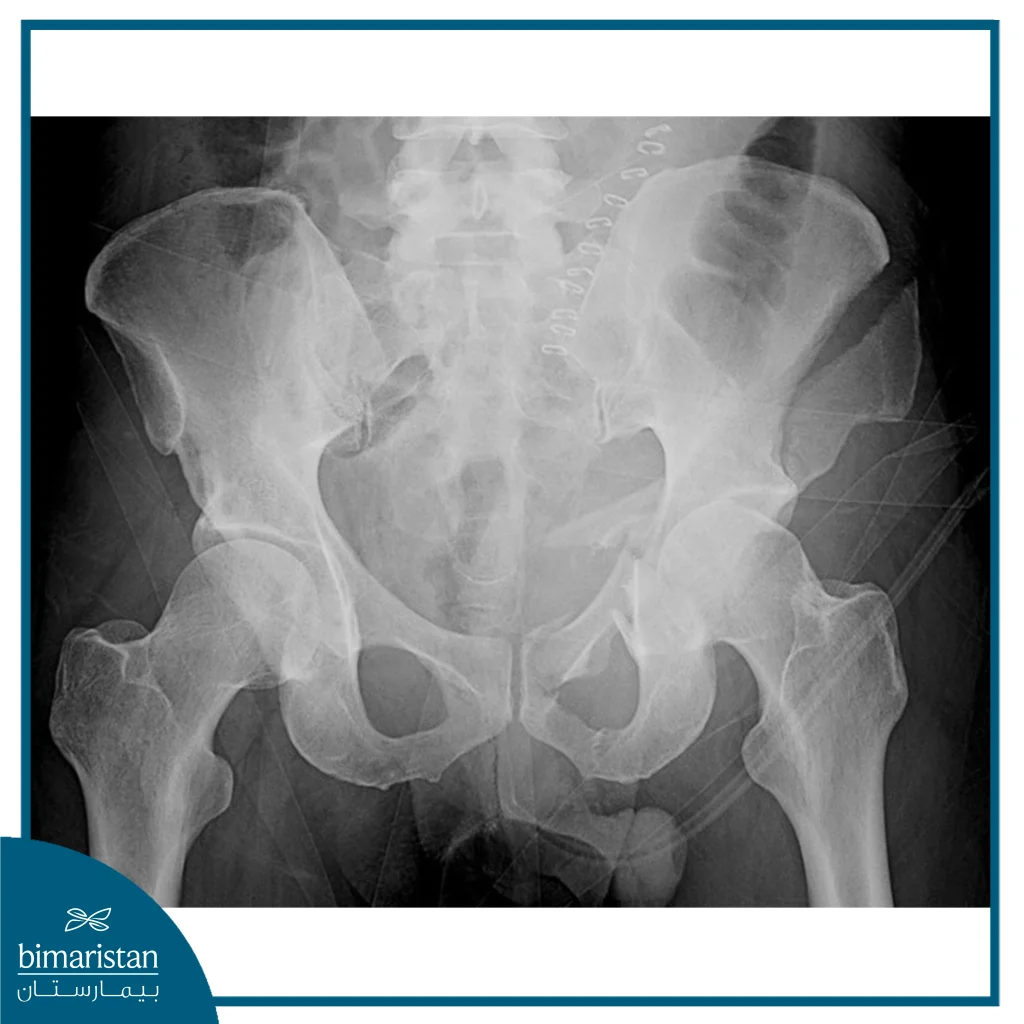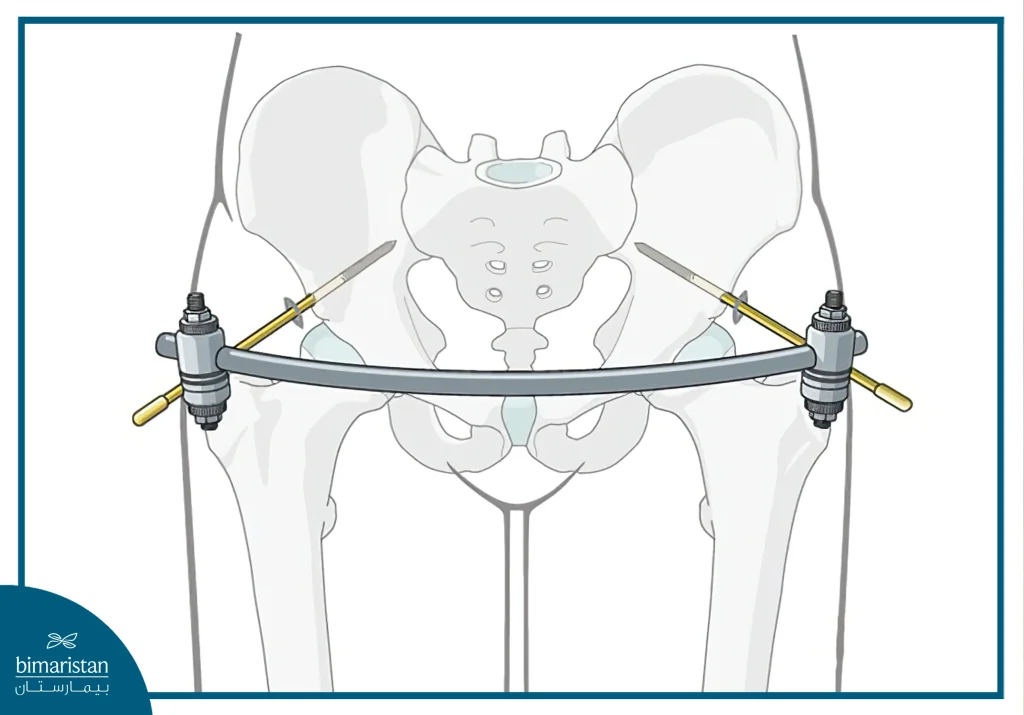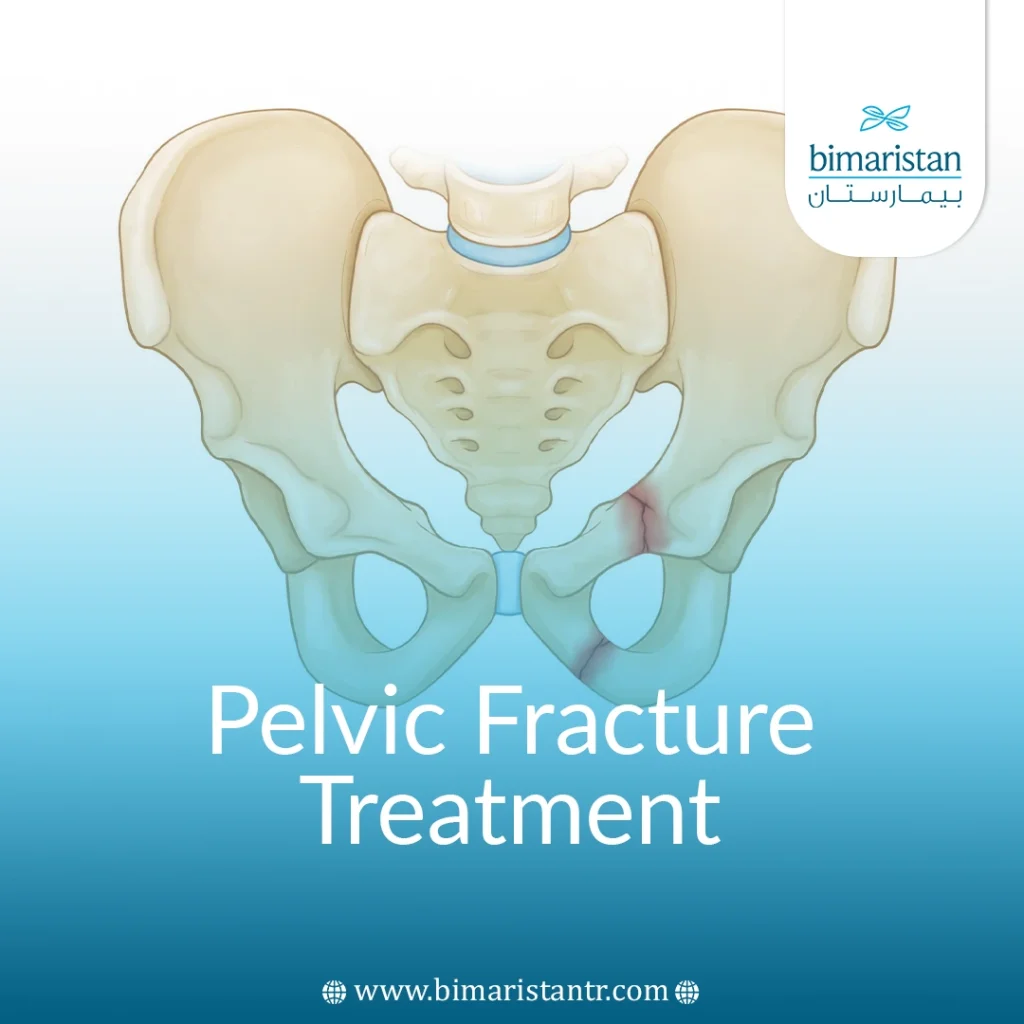Pelvic fracture treatment varies depending on the severity and type of fracture. Simple pelvic fractures may be managed with rest and fixation, while severely displaced fractures often require surgery. Turkey is home to some of the world’s top orthopedic surgeons, who offer advanced surgical techniques for optimal recovery.
It’s essential to differentiate between a pelvic fracture and a hip joint fracture (iliofemoral joint). A pelvic fracture involves the pelvic ring bones—sacrum and hip bones—while a hip fracture affects the femoral head or neck.
Symptoms of pelvic fractures differ from hip fractures, and timely treatment is crucial due to the high vascularity of the pelvic area. But what is the best pelvic fracture treatment? How long does healing take? Can walking be painful after treatment?
Find out all the answers in this in-depth guide on Pelvic Fracture Treatment in Turkey.
Pelvic fracture Treatment and what you need to know about it
Pelvic fracture treatment in patients requires special care from the best doctors, especially in older adults. However, with advances in treatment methods, it has become possible to treat this problem and even hip joint replacement completely.
But before we delve into the different types of surgeries for treating pelvic fractures, we need to briefly discuss the causes, symptoms, and complications resulting from hip fractures, in addition to the type and severity of the pelvic fracture. Then, we can move on to the surgical methods used in Turkey in detail.
It should be noted that the term “pelvic joint” is the same as the hip joint. The word “pelvis” refers to the pelvic ring, which consists of the sacrum that articulates with the hip bones. Each hip bone consists of three bones: the ilium, ischium, and pubis.
Pelvic fracture treatment is essential, as pelvic fractures are uncommon, representing about 4% of all fractures. Interestingly, severe pelvic fractures often occur in young individuals, contrary to typical expectations.

Causes and risk factors of pelvic fracture
Severe impacts often cause pelvic fractures, falls onto the pelvis from a height, or car accidents. They can also occur in athletes who experience high pressure on their bones and muscles during exercises, especially runners or marathon participants.
However, the occurrence rate of pelvic fractures varies due to several factors:
- Age: Although severe pelvic fractures are more common among individuals aged 15-28, especially in young athletes due to sports injuries or reckless driving, the risk of pelvic fractures increases with age due to osteoporosis in older adults.
- Previous history of falls from a height, severe impacts to the pelvic area, or previous car accidents.
- Intense and violent sports involve continuous movement and immense pressure on the bones and muscles, whether in the pelvis or elsewhere.
Pelvic fracture symptoms
The symptoms of a pelvic fracture depend on the severity, degree, and type of fracture, as well as whether the bones are in place or displaced (i.e., whether it is a stable or unstable pelvic fracture) and whether the fracture is open or closed. However, the common symptoms include:
- Pain in the fracture area, genital area, hip, and lower back, which worsens with movement.
- In severe fractures, the patient may be unable to stand or walk, while in mild fractures, they may be able to do so but with pain.
- The patient may experience difficulty urinating, numbness, or tingling in the legs and feet (if the nerves in the pelvic area are injured due to the fractures).
- Bloody urine or vaginal bleeding in women.
- Numbness, tingling, swelling, and redness in the affected area.
- The pain may radiate to the abdomen, and in cases of severe bleeding, the patient may faint, requiring immediate medical attention.
It should be noted that in most cases of falls or car accidents, the injured person may have a pelvic fracture without experiencing symptoms. Therefore, it is important for the doctor to investigate these fractures in such individuals routinely.
Pelvic fracture treatment in Turkey
Pelvic fracture treatment depends on the severity and stability of the fracture. Stable fractures may heal with rest and immobilization, while unstable fractures often require surgical intervention. Although the recovery process can be lengthy and sometimes uncomfortable, advancements in orthopedic surgery and fracture treatment in Turkey have made the procedure more effective, less painful, and faster for patients.
Before beginning pelvic fracture treatment, whether through surgical or non-surgical methods, initial first aid measures are crucial to prevent complications. Pelvic fractures, especially unstable ones, can be life-threatening if they involve vascular injury and severe bleeding, potentially leading to shock if not treated promptly. Understanding emergency care and proper stabilization is essential for ensuring a safer and more effective recovery process.
Initial management
In the event of an injury and suspicion of a pelvic fracture (such as in cases of car accidents or falls from a height), especially if there is a fall onto the pelvis, the accompanying individuals or paramedics should immobilize the pelvis using a pelvic binder. If a pelvic binder is not available, a makeshift binder can be created using some fabric at the site of the injury.

Studies have indicated several benefits of pelvic stabilization, including reducing blood loss from fractures and pelvic bone injuries, reducing movement of the fractured bones, and minimizing complications and hospital stays.
Note: In cases of lateral pelvic fractures (side impact fractures), it is important to avoid using a pelvic stabilization binder to prevent worsening the problem.
Afterward, vital signs should be monitored in case the patient goes into shock due to bleeding. As soon as possible, a large venous access should be established to administer pain relievers and fluids to compensate for blood loss or even transfuse blood units, as determined by the healthcare provider based on the estimated amount of bleeding.
Non-surgical pelvic fracture treatment
Doctors usually resort to this treatment for simple pelvic fractures (treatment of simple pelvic fractures), where the fracture is isolated to a single pelvic bone and the fractured bone is not separated from the rest of the bones. The aim is for the bones to naturally heal over a period of time (approximately 6 weeks).
In this case, pain relievers and pelvic stabilization with a pelvic binder are usually sufficient. The emphasis is on rest and avoiding putting weight on the fractured pelvis. Avoiding any activities that may cause injury or stress to the pelvic bone is also advised.
The doctor may decide to use crutches or a wheelchair for a period of time to provide rest for the bones to heal properly.
Complete immobilization or prolonged bed rest should be avoided to prevent muscle atrophy or deep vein thrombosis.
Modern methods for conservative treatment of pelvic fractures
Studies have shown that electronic bone stimulation or ultrasound waves have benefits in reducing pain and complications for the patient. They also play an important role in promoting proper bone healing. However, there is no evidence of improvement in pelvic bone function after pelvic fractures using these methods.
Surgical pelvic fracture treatment
Doctors use surgical treatment (pelvic fracture surgery) in cases of unstable (displaced) fractures and displacement of the pelvic bones from their original position, in addition to the presence of complications such as bleeding or injury to other pelvic organs. Some of these methods include:
External pelvic fixation surgery
This is either performed as a definitive treatment for a pelvic fracture problem or as a preliminary treatment for a larger surgical procedure if the patient is not prepared for it. It involves inserting metal rods and screws to stabilize the broken bones (pelvic fractures) through small incisions made by the surgeon in the skin.

Pelvic traction surgery
In cases of vertical fractures (fractures resulting from falls or car accidents), in addition to displacing some pelvic bones from their position, the lower limb shortens in the direction of the fracture (this also applies to hip joint fractures). Therefore, doctors apply traction treatment.
This involves fixing two metal rods through screws to both ends of the leg on the affected side and applying a certain weight to pull the leg in a direction that aligns the bones on top of each other and maintains the normal length of the limb.
Internal Pelvic Fixation Surgery
Internal pelvic fixation surgery is an open surgical procedure in which the surgeon opens the site of the fractures and aligns and stabilizes the broken bones using screws and metal plates. This is the preferred solution for what is known as an open-book pelvic fracture.
Pelvic fracture treatment in the elderly
Treating pelvic fractures in older adults can be difficult and complex due to the sensitivity of elderly individuals to any surgical intervention, decreased overall body function, and increased bone fragility associated with aging.
Pelvic fracture treatment for older adults with stable fractures can often be managed conservatively. However, to prevent muscle atrophy and a decrease in self-reliance for daily activities, it’s important to avoid prolonged immobility lasting more than a few weeks. Additionally, there is an increased risk of deep vein thrombosis in these cases.
In cases of unstable fractures, pelvic fracture treatment typically requires surgical intervention. This can be performed through internal or external fixation to properly treat unstable pelvic fractures.
My experience with pelvic fracture
The patient, Cole, shares his experience with a pelvic fracture:
I want to share my experience with pelvis fracture treatment. As someone who has always loved sports, I was an active member of my school’s football team. During a match, I took a fall on my pelvis, thinking it was just a typical tumble. However, the pain only grew worse, so I decided to visit an orthopedic doctor. After an evaluation, I was told that I had multiple fractures in my pelvis. At that moment, I feared my sports career was over.
Fortunately, the doctor reassured me, explaining that the success rate of pelvis fracture treatment was high, and with surgery, I would be able to return to playing sports in just a few months. I chose to proceed with the surgery, and today, I am back on the field, playing football in college without any limitations.
In conclusion, pelvic fracture treatment is essential for managing this rare but serious injury. Prompt diagnosis after accidents falls, or sports injuries ensure timely treatment with minimal complications.
Sources:
- Diagnosis and Management of Pelvic Fractures, Bulletin of the NYU Hospital for Joint Diseases.
- Acute Management of Pelvic Ring Injuries, James Black, MD, FAAOS, Orthopaedic Trauma Service, Spartanburg Regional Healthcare System.



